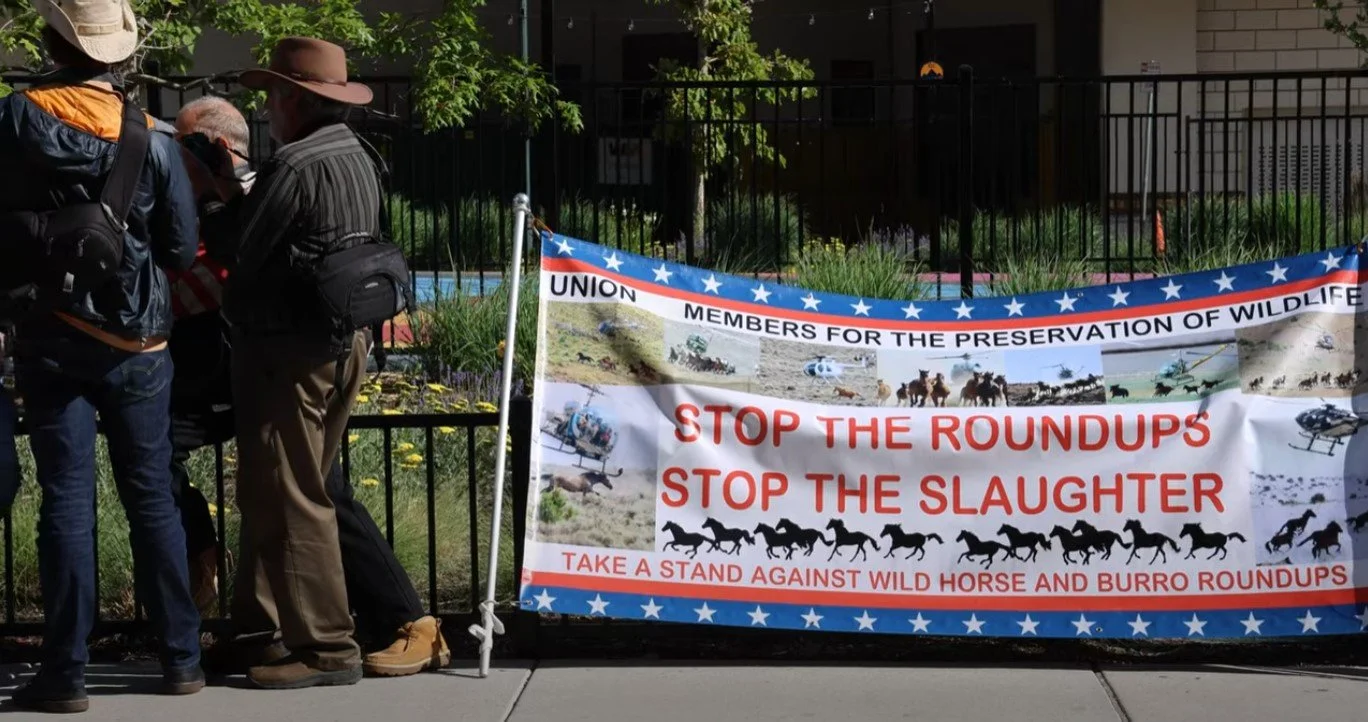Saving America’s Wild Horses
America’s iconic wild life is disappearing. What can we do?
America is known worldwide for its majestic wildlife. From the imposing presence of bears and elk to the haunting calls of coyotes, and even the fearsome reputation of gators, the nation's assortment of animals never fails to captivate. However, there is one creature that embodies the spirit of America like no other: the wild horse.
Revered for its untamed beauty and untethered spirit, the wild horse has become a symbol of freedom and resilience. Yet, amidst the admiration of its citizens, a shadow looms over these magnificent creatures, for they face the ominous threat of extinction. It is a somber reality that compels us to step forward and protect their existence for generations to come.
The number of wild horses has decreased to 60,000, living on 27 million acres of public lands. This decline continues due to efforts by government agencies, mono-agriculture, and industry lobbying. The BLM (Bureau of Land Management) manages these lands and the horse populations, receiving over 131 million dollars specifically for horses and burros.
The BLM, or the Bureau of Land Management, is known for their controversial methods of managing wild horse populations. They utilize helicopters and nets to round up these magnificent creatures, a practice that has sparked significant criticism due to the inherent risk of injury involved. Once captured, these horses are confined to pens that expose them to relentless sunlight.
To further control and manage the population, they are branded, sorted, and ultimately put up for adoption. It is disheartening to note that the taxpayers bear the burden of funding this process, with each horse costing around $1000 per year to maintain. Unfortunately, allegations of corruption have tainted the BLM's program, casting a shadow over their noble intentions.
According to an investigative report by the New York Times and animal rights activists like Randy Massaro, some of those horses are shipped out of the country and sold to kill buyers, who slaughter them for fertilizer and food.
What can be done to save America’s Wild Horse population?
In 1910, the entire horse population peaked to over 27.5 million. Now the number of wild horses is closer to 60,000, spread out over 27 million acres of public lands, and it’s still decreasing. About half of those populations are in Nevada, the center of the battle for Wild Horses. So that’s where we went. To talk directly to every voice weighing in on this issue, and see if we could help.
These videos, and the film we're in the process of making, were inspired by the world's most legendary wildlife documentarian, David Attenborough, who created "Planet Earth" and dozens of other programs that were the first (and often last) to introduce species to the world. After a lifetime studying life on Earth, he now looks back on his long and illustrious career with sobering sorrow.
Attenborough has watched many of the species vanish for good. He is raising the alarm for what he calls the sixth massive global extinction. He points to data that shows humans are causing an animal and plant extinction rate 100 times faster than it previously occurred.
Approximately 1 in 8 species are at risk
Ecosystem Renewal
Working for Planet Forward, a sustainability organization that specializes in how business and the planet can co-exist and thrive, I found ecosystem renewal to be one of the most exciting and interesting win-win ideas I had ever heard, and almost no one was talking about it. By protecting ecosystems, we ensure the health of food, water, and the climate.
You can transform the rampant desertification we see into life-giving, cure-giving, water-giving, beautiful and meaningful landscapes. The same landscapes that inspired movies like Avatar, a movie so beautiful people got depressed when they left the theater and returned to their local strip mall.
Preventing Drought
Our country used to look more like a lush rain forest, and from the data, you can see that the reductions of buffalo herds and horse populations around the turn of the 19th century, directly coincided with the dust bowl, which led to the reduction of water supplies that now threatens major cities with catastrophic drought.
What can we do?
Species numbers are dropping everywhere, and even some BLM reps admitted that their children may not to be able to enjoy these beautiful animals in a few decades, so let’s not GIVE UP.
We as Americans have unprecedented acreage of public land that draws visitors from all over the world, and it is funded by millions of our dollars, so let’s get involved in how those dollars are used, so we can uphold the original principles and intentions of the laws that helped create them. It may not be around for long, if we don’t SHOW UP to appreciate it and protect it. Let the BEAUTY in.
I hope you enjoy the video, and subscribe for more GREAT IDEAS that lead to the GOOD LIFE.
I love you, and we’re in this together! Join Team Friendship and help us discover and share the GOOD NEWS together!





